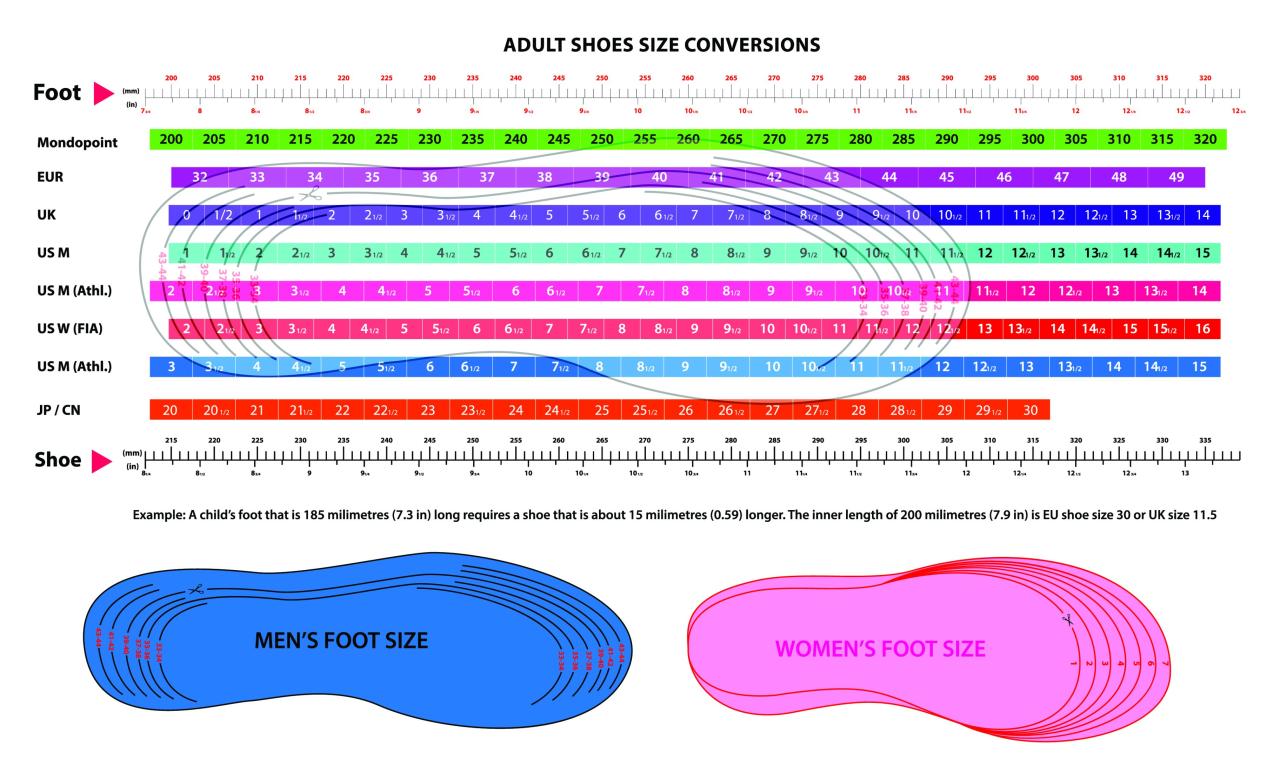Jordan shoes for men are more than just footwear; they are a cultural phenomenon, a symbol of athletic prowess, and a testament to the enduring legacy of Michael Jordan. From their humble beginnings as a collaboration between Nike and the basketball legend, Jordan shoes have evolved into a global empire, influencing fashion, sneaker culture, and even the world of finance.
Their iconic designs, innovative technologies, and limited-edition releases have captivated sneakerheads and fashion enthusiasts alike. But beyond the hype and the resale value, Jordan shoes represent a story of innovation, collaboration, and the enduring power of a brand built on performance, style, and the enduring spirit of a legend.
History and Origins of Jordan Shoes
The iconic Jordan shoe, synonymous with basketball excellence and street style, boasts a rich history deeply intertwined with the legendary Michael Jordan. The collaboration between Jordan and Nike, a partnership that revolutionized athletic footwear, began in 1984, marking a turning point in the history of basketball shoes.
The Michael Jordan and Nike Partnership
In 1984, Michael Jordan, a rookie for the Chicago Bulls, signed a five-year endorsement deal with Nike. This partnership marked the beginning of a legendary collaboration that would redefine the sneaker industry. Nike, at the time, was a relatively new player in the basketball shoe market, facing competition from established brands like Converse and Adidas.
Jordan’s endorsement was a strategic move for Nike, aimed at capturing a larger share of the basketball shoe market.
- Air Jordan 1 (1985):The first Air Jordan shoe, released in 1985, broke the mold of traditional basketball shoes. Its bold red and black color scheme, a departure from the standard white and black, challenged the NBA’s uniform regulations. The shoe was banned by the NBA for violating its dress code, but this controversy only fueled its popularity.
The Air Jordan 1 became a symbol of rebellion and individuality, cementing its place in sneaker history.
- The “Banned” Campaign (1985):Nike cleverly capitalized on the NBA’s ban, launching a marketing campaign that further propelled the Air Jordan 1 to legendary status. The “Banned” campaign played on the rebellious spirit of the shoe, associating it with breaking the rules and defying expectations.
This campaign solidified the Air Jordan 1 as a symbol of individuality and athletic excellence.
- Air Jordan 3 (1988):The Air Jordan 3, designed by Tinker Hatfield, introduced the iconic Jumpman logo, which became synonymous with the Jordan brand. The Jumpman logo, depicting Michael Jordan in mid-air, captured the essence of his athleticism and dominance on the court. The Air Jordan 3 also featured a visible Air unit in the heel, providing enhanced cushioning and comfort.
- Air Jordan 11 (1995):The Air Jordan 11, released in 1995, is considered one of the most iconic and coveted Jordan shoes. Its sleek design, featuring patent leather accents and a unique translucent outsole, pushed the boundaries of basketball shoe aesthetics. The Air Jordan 11 was also worn by Michael Jordan during his historic 1995-1996 season, further cementing its legendary status.
The Evolution of the Jordan Brand
The Jordan brand, initially a sub-brand of Nike, has evolved into a global powerhouse, transcending the realm of basketball shoes to encompass a wide range of apparel, accessories, and lifestyle products. The brand’s success can be attributed to its iconic logos, strategic marketing campaigns, and the enduring legacy of Michael Jordan.
- Iconic Logos:The Jumpman logo, introduced with the Air Jordan 3, remains the primary symbol of the Jordan brand. The logo represents Michael Jordan’s athleticism, dominance, and legacy. The “Wings” logo, introduced with the Air Jordan 12, features a pair of wings, symbolizing flight and freedom, representing Jordan’s ability to soar above the competition.
- Marketing Strategies:The Jordan brand has consistently employed innovative and impactful marketing strategies to maintain its relevance and appeal to a global audience. From celebrity endorsements and athlete partnerships to collaborations with renowned designers and artists, the brand has successfully tapped into various cultural trends and demographics.
The “Just Do It” slogan, synonymous with Nike, has become a cultural touchstone, inspiring individuals to pursue their goals and embrace their passion.
- Cultural Impact:Jordan shoes have transcended their status as athletic footwear to become a cultural phenomenon. They have been featured in films, music videos, and art installations, reflecting their influence on popular culture. Jordan shoes have also become a symbol of status, aspiration, and street style, influencing fashion trends across the globe.
Stories and Anecdotes
The history of Jordan shoes is filled with stories and anecdotes that illustrate their cultural impact. One notable anecdote involves the Air Jordan 1’s “Banned” campaign. Nike, in a bold marketing move, embraced the NBA’s ban on the shoe, turning the controversy into a powerful marketing tool.
The “Banned” campaign created a sense of rebellion and exclusivity, further propelling the Air Jordan 1 to legendary status. The Air Jordan 11, worn by Michael Jordan during his historic 1995-1996 season, became synonymous with his return to the NBA and the Chicago Bulls’ dominance.
The shoe’s sleek design and iconic status have cemented its place as one of the most sought-after and coveted Jordan shoes. The Air Jordan 11’s “Concord” colorway, featuring black patent leather accents and a translucent outsole, is a testament to the shoe’s enduring popularity and cultural significance.
Popular Jordan Shoe Models for Men
The Jordan brand offers a diverse range of shoe models for men, each catering to specific needs and preferences. From classic basketball shoes to lifestyle sneakers and running shoes, there’s a Jordan shoe for every occasion and style.
Most Popular Jordan Shoe Models, Jordan shoes for men
The following table lists some of the most popular Jordan shoe models for men, along with their release dates and key features.
| Model | Release Date | Key Features |
|---|---|---|
| Air Jordan 1 | 1985 | High-top design, iconic “Swoosh” logo, durable leather construction, classic colorways |
| Air Jordan 4 | 1989 | Mesh panels for breathability, iconic “wings” logo, visible Air unit in the heel, durable rubber outsole |
| Air Jordan 11 | 1995 | Sleek design, patent leather accents, translucent outsole, iconic “Concord” colorway |
| Air Jordan 13 | 1997 | Panther-inspired design, “Hologram” logo, Zoom Air unit in the forefoot, durable rubber outsole |
| Air Jordan 14 | 1998 | Sleek and aerodynamic design, “Ferrari” inspiration, Zoom Air unit in the forefoot, durable rubber outsole |
Jordan Shoes by Purpose
Jordan shoes are designed for a variety of purposes, catering to different needs and preferences.
| Purpose | Models |
|---|---|
| Basketball | Air Jordan 1, Air Jordan 4, Air Jordan 11, Air Jordan 13, Air Jordan 14 |
| Lifestyle | Air Jordan 1 Low, Air Jordan 4 Retro, Air Jordan 11 Retro Low, Air Jordan 1 Mid |
| Running | Air Jordan 1 Retro High OG, Air Jordan 4 Retro, Air Jordan 11 Retro Low |
Significance and Cultural Relevance
Certain Jordan shoe models hold significant cultural relevance and have become icons in their own right. The Air Jordan 1, the first shoe in the Jordan line, is a timeless classic, representing the birth of a legendary partnership. The Air Jordan 4, with its iconic “wings” logo and mesh panels, embodies the spirit of flight and performance.
The Air Jordan 11, known for its sleek design and patent leather accents, represents the pinnacle of basketball shoe aesthetics.
Style and Design Trends in Jordan Shoes
Jordan shoe designs have evolved over the years, reflecting changing fashion trends and the influence of streetwear culture. From bold colorways and innovative materials to collaborations with renowned designers, the Jordan brand has consistently pushed the boundaries of sneaker design.
Evolution of Jordan Shoe Designs
Jordan shoe designs have undergone a significant transformation, from the classic leather construction of the Air Jordan 1 to the innovative materials and technologies used in modern models. Early Jordan shoes were primarily designed for performance, featuring durable leather construction and supportive cushioning.
As the Jordan brand evolved, the focus shifted towards incorporating style and fashion trends into the designs. The introduction of patent leather accents in the Air Jordan 11, for example, elevated the shoe’s aesthetic appeal, blurring the lines between athletic footwear and fashion.
- Colorways and Materials:Jordan shoes are known for their bold colorways and innovative use of materials. Early models featured classic color combinations like red and black, while later models introduced vibrant hues and unique textures. The use of patent leather, mesh panels, and other innovative materials has allowed Jordan designers to experiment with different aesthetics and create visually striking designs.
- Collaborations:The Jordan brand has collaborated with renowned designers and artists, resulting in limited-edition releases that have become highly coveted among sneaker enthusiasts. These collaborations have injected fresh perspectives and creative energy into Jordan shoe designs, further expanding the brand’s reach and appeal.
- Retro Releases:The Jordan brand frequently re-releases classic models, often in updated colorways and materials. These retro releases appeal to both longtime fans and new generations of sneaker enthusiasts, ensuring the brand’s legacy remains relevant.
Influence of Streetwear Culture
Streetwear culture has had a profound influence on Jordan shoe design. The emphasis on individuality, self-expression, and pushing boundaries in streetwear has inspired Jordan designers to create shoes that are both functional and stylish. The rise of sneaker culture has also contributed to the popularity of Jordan shoes, as collectors and enthusiasts seek out limited-edition releases and rare colorways.
Incorporation into Different Fashion Styles
Jordan shoes have become a staple in various fashion styles and subcultures. From streetwear and hip-hop to athletic wear and casual fashion, Jordan shoes have seamlessly integrated into different wardrobes. The versatility of Jordan shoes allows individuals to express their personal style and individuality through their footwear choices.
Jordan shoes can be dressed up or down, making them a versatile option for a variety of occasions.
The Impact of Jordan Shoes on Sneaker Culture: Jordan Shoes For Men
Jordan shoes have played a pivotal role in shaping sneaker culture, influencing its global reach and fostering a passionate community of collectors and enthusiasts. The phenomenon of sneakerheads, individuals with a deep passion for collecting and trading sneakers, has been fueled by the desirability and cultural significance of Jordan shoes.
Sneaker Culture and Global Reach
Sneaker culture, a global phenomenon that revolves around the appreciation and collection of sneakers, has its roots in basketball and the iconic Jordan brand. The release of new Jordan shoes often generates significant hype and excitement among sneaker enthusiasts, leading to long lines, online frenzy, and even resell markets.
The Jordan brand has successfully tapped into the global appeal of sneaker culture, expanding its reach beyond basketball to encompass fashion, music, and art.
The Phenomenon of Sneakerheads
Sneakerheads are individuals with a deep passion for collecting and trading sneakers. They often possess extensive knowledge of sneaker history, design, and limited-edition releases. The pursuit of rare and coveted Jordan shoes has become a competitive and passionate hobby for many sneakerheads.
Sneakerheads are often active in online communities, forums, and social media platforms, sharing their knowledge, connecting with fellow enthusiasts, and discussing the latest releases.
Sneaker Resale Markets and Economic Value
The high demand for Jordan shoes, particularly limited-edition releases, has led to the emergence of lucrative sneaker resale markets. Sneakerheads often purchase limited-edition Jordan shoes with the intention of reselling them at a higher price. The economic value of certain Jordan shoes can fluctuate based on their rarity, condition, and cultural significance.
The sneaker resale market has become a significant industry, with online platforms and brick-and-mortar stores dedicated to buying, selling, and trading sneakers. The economic value of Jordan shoes reflects their cultural significance and the enduring appeal of the brand.
Sustainability and Ethical Considerations in Jordan Shoe Production
As a global brand with a significant environmental footprint, the Jordan brand faces challenges in balancing its commitment to sustainability with the demands of a rapidly growing market. The production of Jordan shoes involves the use of various materials and manufacturing processes that have an impact on the environment and labor practices.
Environmental Impact of Jordan Shoe Manufacturing
The production of Jordan shoes, like many other footwear products, relies on materials and manufacturing processes that have an environmental impact. The use of leather, synthetic materials, and adhesives can contribute to greenhouse gas emissions and waste generation. The transportation of materials and finished products also contributes to the brand’s carbon footprint.
The Jordan brand has made some efforts to reduce its environmental impact, including the use of recycled materials and sustainable manufacturing practices. However, there is room for improvement in terms of minimizing the brand’s environmental footprint.
Ethical Considerations in Labor Practices
The footwear industry has faced scrutiny over labor practices and working conditions in its supply chains. Ensuring ethical labor practices, including fair wages, safe working conditions, and the elimination of child labor, is crucial for the Jordan brand to maintain its reputation and uphold its ethical commitments.
The Jordan brand has implemented various initiatives to promote ethical labor practices in its supply chain, including audits and partnerships with organizations dedicated to worker rights. However, ongoing monitoring and transparency are essential to address potential issues and ensure ethical labor practices across the entire supply chain.
Potential Solutions and Initiatives
The Jordan brand can further promote sustainability and ethical practices in its production by implementing a range of solutions and initiatives. This includes exploring alternative materials with a lower environmental impact, reducing waste generation through efficient manufacturing processes, and investing in renewable energy sources.
The brand can also enhance transparency in its supply chain, providing consumers with information about the origin of materials and the working conditions of its suppliers. By taking a proactive approach to sustainability and ethical practices, the Jordan brand can contribute to a more responsible and sustainable footwear industry.
The Future of Jordan Shoes

The future of Jordan shoes holds immense potential, with emerging trends and technologies poised to shape the brand’s innovations and designs. The Jordan brand is continuously evolving, seeking to maintain its relevance in a rapidly changing market. Collaborations, partnerships, and technological advancements are likely to play a significant role in shaping the future of Jordan shoes.
Emerging Trends and Technologies
Emerging trends and technologies are influencing the future of sneaker design, including the use of sustainable materials, personalized customization, and advanced performance technologies. The Jordan brand is exploring these trends, seeking to incorporate them into future shoe designs. The use of recycled materials, for example, aligns with the brand’s commitment to sustainability, while personalized customization allows consumers to express their individuality through their footwear choices.
Advanced performance technologies, such as adaptive cushioning and data-driven insights, can enhance the functionality and comfort of Jordan shoes, further pushing the boundaries of athletic footwear.
Potential Evolution of the Jordan Brand
The Jordan brand is likely to continue expanding its reach beyond basketball, exploring new markets and product categories. The brand has already ventured into apparel, accessories, and lifestyle products, and it is likely to explore new opportunities in areas such as technology, entertainment, and digital experiences.
The Jordan brand’s ability to adapt to changing trends and embrace innovation will be crucial to its continued success in the future.
Collaborations and Partnerships
Collaborations and partnerships with renowned designers, artists, and athletes are likely to continue playing a significant role in shaping the future of Jordan shoes. These collaborations can inject fresh perspectives and creative energy into the brand’s designs, further expanding its reach and appeal to a global audience.
The Jordan brand has a history of successful collaborations, and it is likely to continue exploring new partnerships that align with its values and vision.
Final Review
The legacy of Jordan shoes is undeniable. They have shaped sneaker culture, influenced fashion trends, and continue to captivate generations. Whether you’re a seasoned collector, a casual enthusiast, or simply appreciate the artistry of design, Jordan shoes hold a special place in the world of footwear.
As technology advances and trends evolve, the future of Jordan shoes remains bright, promising new innovations and collaborations that will continue to shape the sneaker landscape for years to come.














